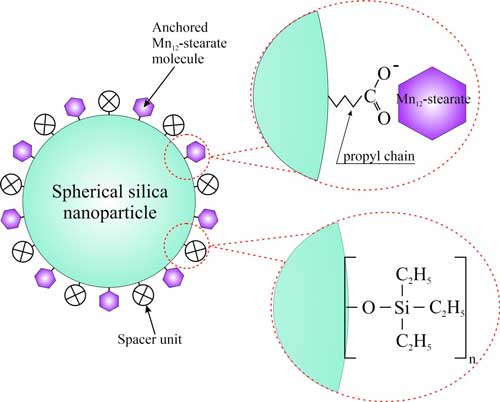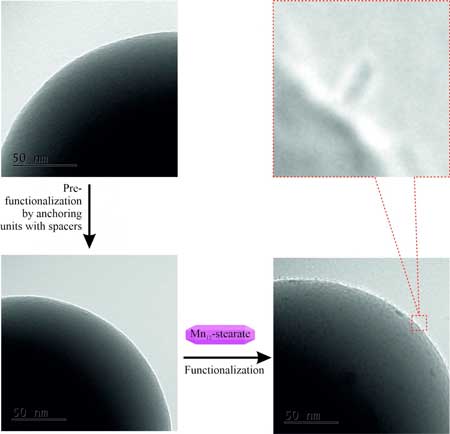
hotline:
17715390137
Tel/Wechat:
18101240246 (Technology)
0512-68565571
Email:mxenes@163.com (Sales Engineer)bkxc.bonnie@gmail.com
Scan the code to follow or search the official account on WeChat:
2D Materials Fronrier After paying attention,
click on the lower right corner to contact us,
Enter enterprise WeChat.
Professional Services Online

 (Nanowerk News) After obtaining the latest research in the field of single-molecule magnets (SMM), scientists have taken another step towards the construction of ultra-dense magnetic memories and molecular neural networks, especially self-associated memories, and as a model of the human brain Multi-criteria optimization system in operation.
(Nanowerk News) After obtaining the latest research in the field of single-molecule magnets (SMM), scientists have taken another step towards the construction of ultra-dense magnetic memories and molecular neural networks, especially self-associated memories, and as a model of the human brain Multi-criteria optimization system in operation.
Interestingly, this was achieved by using methods available in ordinary chemistry laboratories (nanomaterials, "how to control the distribution of fixed Mn 12-stearic acid monomolecular magnets").
As many as 100 million bits per square millimeter of magnetic storage? A neural network made up of single molecules? The team led by Lukasz Laskowski, Department of Molecular Engineering and Nanoelectronics, Institute of Nuclear Physics, Polish Academy of Sciences, focuses on separating individual particles of molecular magnets, which brings us closer to achieving these goals.
Until the late 1980s, a widely accepted view was that ferromagnetic properties were related to crystal structure and only to crystals of appropriate volume. However, in 1991, a material made of Mn 12 O 12 (OAc) 16 (H 2 O) 4 molecules appeared, also known as Mn 12-stearate, which contradicted this general view. .
It turns out that the material exhibits ferromagnetic properties below a certain temperature. It is worth emphasizing that these magnetisms are not characteristics of the crystal structure in the case of ferromagnetism, but characteristics of individual molecules. This is why this type of material is called a single-molecule magnet (SMM).

Schematic of the presented nanocomposite: separation of Mn 12-manganese stearate single-molecule magnet onto the surface of spherical silica (Source: IFJ PAN)
It is not difficult to imagine the application of this compound in ultra-dense memory cells or neural network elements. Therefore, it seems that single-molecule magnets will soon be widely used. But this did not happen. This may be due to their separation problems and the acquisition of the correct single molecular system, which are far enough apart from each other to prevent them from affecting each other.
In addition, after obtaining such a system, it is necessary to develop a method for observing molecules as small as 2 nm.
So how can we make full use of the performance of single-molecule magnets? How can individual particles of such materials be arranged on a substrate so that they do not lose their performance? How to verify the emergence of such a system? Do you need sophisticated technology for this?
The basic assumption of the project is to obtain separated single-molecule magnets on a magnetic neutral substrate, and to observe such molecules directly without using advanced laboratory techniques. The priority is to subsequently develop the program for commercial applications.
After selecting the properties of the materials based on their physico-chemical and mechanical properties and molecular structure, it is necessary to develop a synthetic method so that the atoms can be expected to self-align to produce the required nanomaterials. Researchers must then choose single-molecule magnets, the matrix (matrix), the type of anchoring molecules on the surface of the matrix, the way to control their distribution and the distance between them, and the way to directly observe such substances. molecule.
At the stage of selecting possible types of single-molecule magnets, Mn 12-manganese stearate compounds are considered the most promising. The particle has a high ground state spin S = 10 and therefore has a strong magnetic moment. Thanks to some modifications, a soluble form of Mn 12-stearate was obtained, which also proved to have a stronger effect on the atmosphere.
In considering the type and form of media used, scientists consider aspects of observing the resulting material. A successful clear confirmation would be the direct observation of Mn 12-stearic acid molecules on the surface of the substrate. However, since they have only a small size of about 2 nm, this is difficult.
The results proved to be the application of spherical silica. Single-molecule magnets were deposited on spherical silica particles with a diameter of about 300 nm. Due to the spherical shape and relatively small size of such substrates, they can be clearly observed using a transmission electron microscope (TEM). In particular, the team focused on observing the entire horizon (periphery) of such a sphere and detecting single-molecule magnets fixed to it.

Transmission electron microscope (TEM) pictures of the various synthetic steps of the presented nanocomposite: Mn 12-stearate Mn12 single-molecule magnets are separated onto the surface of spherical silica. (Source: IFJ PAN)

| Reminder: Beijing Beike New Material Technology Co., Ltd. supplies products only for scientific research, not for humans |
| All rights reserved © 2019 beijing beike new material Technology Co., Ltd 京ICP备16054715-2号 |